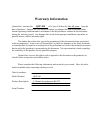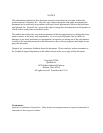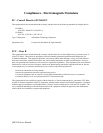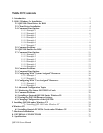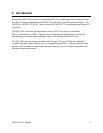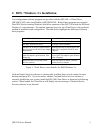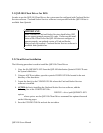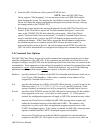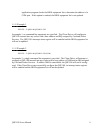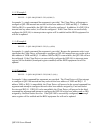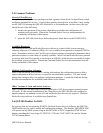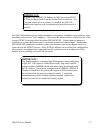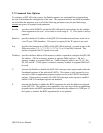
6. Insert the QSP-100 into one of the system's PCMCIA slots.
NOTE: Since the QSP-100 Client
Driver supports "Hot Swapping", it is not necessary to have the QSP-100 installed
when booting the system. By inserting the card before booting, however, the Client
Driver will report the adapter configuration during the boot process thereby verifying
the changes made to the CONFIG.SYS.
7. Reboot the system and note the message displayed when the QSP-100 Client Driver is
loaded. If the Client Driver reports an "invalid command line option", correct the
entry in the CONFIG.SYS file and reboot the system again. If the Client Driver
reports "Card and Socket Services not found", a version of Card and Socket Services
must be installed on the system or the QSP-100 Enabler program must be used to
configure the adapter. If the Client Driver reports the desired adapter configuration,
the installation process is complete and the QSP-100 may be removed and / or
inserted from the system as desired. On each insertion into the PCMCIA socket, the
QSP-100 will be automatically re-configured according to the command line options.
2.4 Command Line Options
The QSP-100 Client Driver accepts up to eight command line arguments from the user to deter-
mine the configuration of the QSP-100. If any arguments are provided, the Client Driver will
attempt to configure any QSP-100s with the options specified in the order they are entered on the
command line. Each argument must be enclosed in parenthesis and must be separated from other
arguments by a space on the command line. Within each argument, any or all of the following
parameters may be specified using a comma (no spaces) to separate each parameter:
Baddress specifies the base I/O address of the QSP-100 in hexadecimal and must reside on an
even 32-byte (20H) boundary. If this option is omitted, a base address will be
assigned by Card and Socket Services.
Iirq specifies the interrupt level (IRQ) of the QSP-100 in decimal. irq must be one of the
following values: 3, 4, 5, 7, 9, 10, 11, 12, 14, 15, or 0 if no IRQ is desired. If this
option is omitted, an interrupt level will be assigned by Card and Socket Services.
Ssocket specifies which PCMCIA socket the QSP-100 must be inserted into for this configu-
ration argument to be used. socket must be in the range 0 - 15. If this option is
omitted, the configuration argument will apply to QSP-100s inserted into any socket.
U instructs the Client Driver to disable the QSP-100's interrupt status register and
enable the Scratchpad registers of the individual UARTs. This option is only
required in very rare cases where an application program requires access to the
UART's Scratchpad register. If this option is omitted, the QSP-100's interrupt status
register is enabled and the UARTs' Scratchpad registers are disabled.
E instructs the Client Driver to update the BIOS equipment list with the addresses
assigned to the QSP-100. This option is only required in very rare cases where an
QSP-100 Users Manual 7



